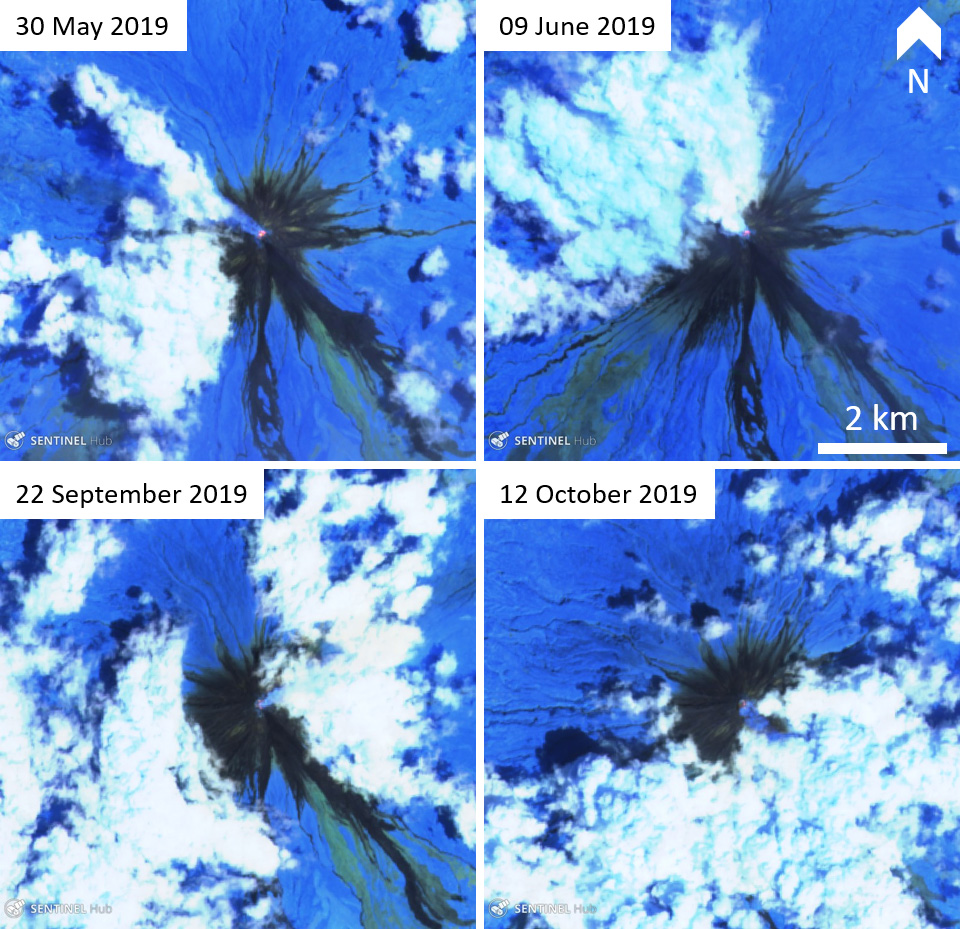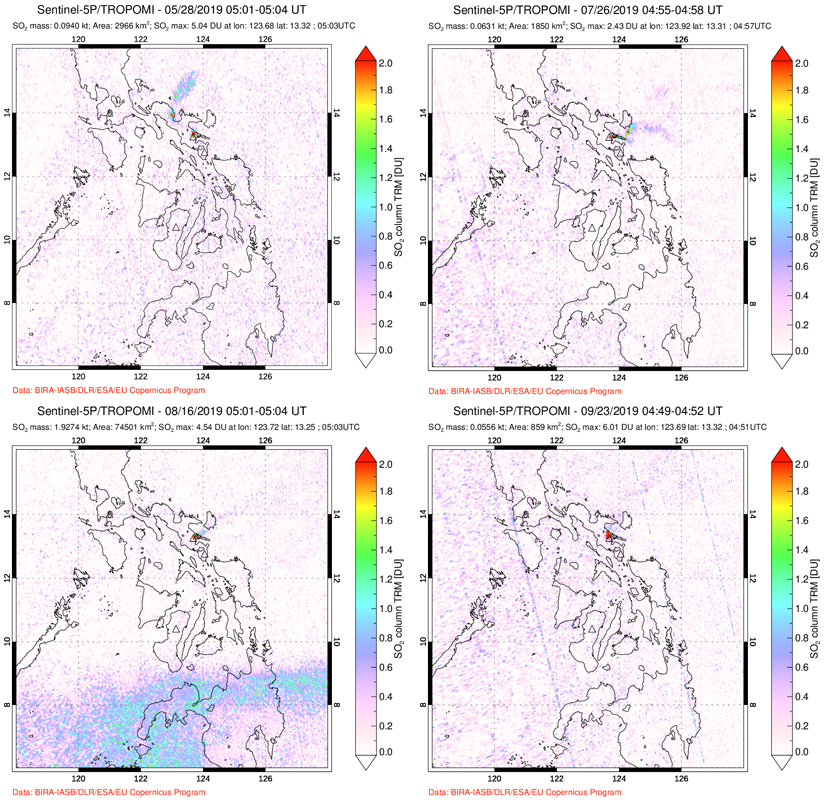Report on Mayon (Philippines) — November 2019
Bulletin of the Global Volcanism Network, vol. 44, no. 11 (November 2019)
Managing Editor: Edward Venzke.
Edited by Kadie L. Bennis.
Mayon (Philippines) Gas-and-steam plumes and summit incandescence during May-October 2019
Please cite this report as:
Global Volcanism Program, 2019. Report on Mayon (Philippines) (Bennis, K.L., and Venzke, E., eds.). Bulletin of the Global Volcanism Network, 44:11. Smithsonian Institution. https://doi.org/10.5479/si.GVP.BGVN201911-273030
Mayon
Philippines
13.257°N, 123.685°E; summit elev. 2462 m
All times are local (unless otherwise noted)
Mayon, located in the Philippines, is a highly active stratovolcano with recorded historical eruptions dating back to 1616. The most recent eruptive episode began in early January 2018 that consisted of phreatic explosions, steam-and-ash plumes, lava fountaining, and pyroclastic flows (BGVN 43:04). The previous report noted small but distinct thermal anomalies, gas-and-steam plumes, and slight inflation (BGVN 44:05) that continued to occur from May into mid-October 2019. This report includes information based on daily bulletins from the Philippine Institute of Volcanology and Seismology (PHIVOLCS) and Sentinel-2 satellite imagery.
Between May and October 2019, white gas-and-steam plumes rose to a maximum altitude of 800 m on 17 May. PHIVOLCS reported that faint summit incandescence was frequently observed at night from May-July and Sentinel-2 thermal satellite imagery showed weaker thermal anomalies in September and October (figure 49); the last anomaly was identified on 12 October. Average SO2 emissions as measured by PHIVOLCS generally varied between 469-774 tons/day; the high value of the period was on 25 July, with 1,171 tons/day. Small SO2 plumes were detected by the TROPOMI satellite instrument a few times during May-September 2019 (figure 50).
Continuous GPS data has shown slight inflation since June 2018, corroborated by precise leveling data taken on 9-17 April, 16-25 July, and 23-30 October 2019. Elevated seismicity and occasional rockfall events were detected by the seismic monitoring network from PHIVOLCS from May to July; recorded activity decreased in August. Activity reported by PHIVOLCS in September-October 2019 consisted of frequent gas-and-steam emissions, two volcanic earthquakes, and no summit incandescence.
Geological Summary. Symmetrical Mayon, which rises above the Albay Gulf NW of Legazpi City, is the most active volcano of the Philippines. The steep upper slopes are capped by a small summit crater. Recorded eruptions since 1616 CE range from Strombolian to basaltic Plinian, with cyclical activity beginning with basaltic eruptions, followed by longer periods of andesitic lava flows. Eruptions occur predominately from the central conduit and have also produced lava flows that travel far down the flanks. Pyroclastic density currents and mudflows have commonly swept down many of the approximately 40 ravines that radiate from the summit and have often damaged populated lowland areas. A violent eruption in 1814 killed more than 1,200 people and devastated several towns.
Information Contacts: Philippine Institute of Volcanology and Seismology (PHIVOLCS), Department of Science and Technology, University of the Philippines Campus, Diliman, Quezon City, Philippines (URL: http://www.phivolcs.dost.gov.ph/); Sentinel Hub Playground (URL: https://www.sentinel-hub.com/explore/sentinel-playground); Global Sulfur Dioxide Monitoring Page, Atmospheric Chemistry and Dynamics Laboratory, NASA Goddard Space Flight Center (NASA/GSFC), 8800 Greenbelt Road, Goddard, Maryland, USA (URL: https://SO2.gsfc.nasa.gov/).



